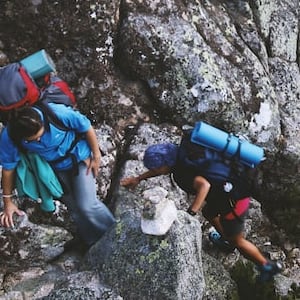feel one’s way: Idiom Meaning and Origin
What does ‘feel one's way’ mean?
The idiom "feel one's way" means to proceed cautiously or slowly, especially in an unfamiliar or uncertain situation, relying on instinct and experience to make progress.

Idiom Explorer
The idiom "make one's way" means to move or progress towards a destination or goal through effort and determination. It implies taking initiative and navigating obstacles to achieve a desired outcome.
The idiom "know one's way around" means to be familiar with or knowledgeable about a particular place, task, or subject.
The idiom "know one's own mind" means to have a clear and definite opinion or decision about something. It implies being confident and decisive in one's thoughts and choices.
The idiom "kick up one's heels" means to relax, have fun, or engage in lively enjoyment and uninhibited behavior.
The idiom "kick up one's heels" is a colorful expression used to describe someone engaging in exuberant and carefree behavior. The phrase is commonly used to convey a sense of joyful abandon, often associated with dancing or celebrating.
The idiom "kick one's heels" means to wait idly or impatiently for something or someone without any purpose or result.
The idiom "in stride" means to take something in one's stride or to handle it calmly and confidently without being affected by it.
The idiom "in one's own little way" means to contribute or make a difference, even if it is small or insignificant, according to an individual's own capabilities or circumstances.
Without a doubt, the idiom "in one's own little way" is intriguing. It holds a unique place in the English language, suggesting that each person has a distinct manner of contributing or making a difference. The phrase emphasizes the importance of personal agency and individual actions.
The idiom "have one's way with" means to have complete control or dominance over someone or something, often in a manipulative or overpowering manner.
Unveiling the Essence
The idiom "feel one's way" is a common expression in the English language. It is used to describe progressing cautiously or slowly, often when one lacks knowledge or information. The phrase can be traced back to at least the early 19th century and likely originates from tactile sensations and the sense of touch.
One possible origin of the idiom is its literal meaning, which refers to physically feeling or touching objects to navigate or explore an unknown environment. It can apply to situations such as walking in the dark or in unfamiliar territory, where individuals rely on their tactile senses to guide them. The idiom has since evolved to encompass metaphorical meanings beyond its literal interpretation.
The figurative usage of "feel one's way" suggests a cautious approach to unfamiliar or uncertain circumstances, particularly when making decisions or taking actions. It implies a need to gather information, assess the situation, and proceed gradually to ensure safety or avoid mistakes. This approach can be related to the idioms "make one's way" and "find one's feet," which both involve navigating unfamiliar territory or situations.
When we "make our way," we are actively moving forward and exploring new paths. Similarly, when we "feel our way," we are cautiously navigating uncharted territory. Both idioms emphasize the importance of taking slow and deliberate steps to ensure progress. In this sense, feeling one's way can be seen as a necessary step in making our way through life.
Another related idiom is "go with one's gut." This phrase refers to relying on one's intuition or instinctive feelings when making decisions. When facing uncertain situations, individuals may choose to trust their gut and proceed based on their internal guidance. This aligns with the cautious approach of feeling one's way, as both emphasize the need to listen to one's inner instincts and take measured steps forward.
In a similar vein, the idiom "feel oneself" relates to the concept of personal awareness and understanding. When we feel ourselves, we are attuned to our emotions, thoughts, and physical sensations. This self-awareness can be crucial when navigating unfamiliar situations, as it allows us to stay grounded and make decisions that align with our values and needs. In the context of feeling one's way, being in touch with oneself can help guide our actions and choices.
Additionally, the idiom "get one's feet wet" captures the idea of starting something new or gaining initial experience. When we get our feet wet, we are venturing into uncharted waters and embracing new challenges. This idiom aligns with feeling one's way, as it reflects the cautious yet exploratory nature of taking those first steps. Just as feeling one's way involves gradually adjusting and adapting, getting one's feet wet implies a gradual immersion into the unknown.
Overall, the idiom "feel one's way" encompasses the essence of caution, uncertainty, and the need for gradual progress in unfamiliar or uncertain situations. Whether it be adapting to new circumstances, making important decisions, or simply exploring the unknown, this idiom offers a concise and evocative way to convey the concept of cautious perseverance. As language continues to evolve, it is intriguing to consider how idioms like "feel one's way" reflect the human experience and the universal challenges we face.
Example usage
Examples of how the idiom "feel one's way" can be used in a sentence:
- He was new to the job, so he had to feel his way and learn as he went along.
- After the power outage, she had to feel her way in the dark to find the flashlight.
- The artist had never worked with clay before, so he had to feel his way to create the sculpture.
More "Navigation" idioms

